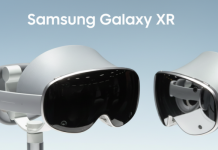The telecom industry is undergoing a major transformation driven by the convergence of artificial intelligence (AI) and 5G wireless technology. These two powerful forces are combining to create intelligent, self-optimizing networks that are transforming industries beyond telecommunications, including healthcare, broadband, and pay TV.
While innovation has always pushed the industry forward, the pace has quickened significantly. The rise of generative AI, such as OpenAI’s ChatGPT, has changed how we interact with data, while 5G networks have revolutionized connectivity. Now, these technologies are merging, bringing about the next phase of digital disruption.
AI and 5G: A Game-Changing Alliance
AI is not a single technology but an umbrella term for a variety of tools and systems, including Narrow AI (task-specific tools like ChatGPT), General AI, and Super AI. In the telecom space, Narrow AI is already driving meaningful change — from predictive maintenance to intelligent customer service solutions.
Meanwhile, 5G networks have enhanced speed, reduced latency, and enabled massive IoT deployment. When paired with AI, 5G allows for the development of self-healing, adaptive networks that can reroute traffic, detect faults before they occur, and optimize performance in real time.
Industry Impact and Growth Opportunities
For telecom companies, integrating AI into 5G infrastructure isn’t just an upgrade — it’s a strategic advantage. These technologies are improving customer experiences, streamlining operations, and creating new business models.
Traditionally, network disruptions required manual troubleshooting. Today, AI can identify and resolve issues before customers are affected, resulting in greater reliability and efficiency. This proactive approach is setting the stage for telecom providers to reverse declines and ignite new growth.
Who’s Leading the Charge?
Major telecom providers like AT&T, Verizon, T-Mobile, and Comcast are racing to integrate AI and 5G. Infrastructure companies such as Cisco, Qualcomm, Nokia, and Ericsson are also playing a critical role by providing the technology backbone for this revolution.
Device manufacturers — including Apple, Google, and Samsung — are embedding AI features into smartphones, routers, and wearables, further accelerating adoption across consumer markets.
Interestingly, startups and smaller tech firms are also finding success by quickly adopting AI innovations. A recent example is RedChip’s AI-powered investment platform, RedChat, which helps users analyze and select small-cap stocks.
The Urgency to Adapt
Despite the clear benefits, many companies are still evaluating how to best adopt AI and 5G. Some prefer to be first movers, gaining a competitive edge, while others are fast followers, waiting for clearer paths. Both strategies can be effective, but time is of the essence.
The reality is that AI is evolving fast, and no single organization has a full grasp of its trajectory. Just two years ago, many leaders underestimated the power of generative AI. Today, those who move swiftly can define the future, while those who hesitate may be left behind.
As we look ahead, it’s clear that AI and 5G will remain at the heart of innovation in telecom. Companies that embrace this convergence early will be best positioned to thrive in an increasingly digital and data-driven world.












